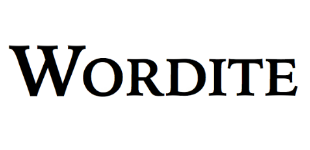its - What does it mean?
'its' hits on the web
You may have been searching for a specific social media @its profile or the tag #its
Definition of 'its'Alternative forms
* it's
Determiner
Belonging to it.
*, I.43:
- The manner wherewith our Lawes assay to moderate the foolish and vaine expences of table-cheare and apparell, seemeth contrarie to it's end.
* 1751 , G. Burnett, trans. Thomas More, Utopia :
- since I have been at the Pains to write it, if he consents to it's being published I will follow my Friend's Advice, and chiefly yours.
* 1813 , Jane Austen, Pride and Prejudice :
- They descended the hill, crossed the bridge, and drove to the door; and, while examining the nearer aspect of the house, all her apprehensions of meeting its owner returned.
* 1989 , Jasper Becker and John Gittings, The Guardian , 5 Jun 1989:
- The Chinese government is at war with its own people.
Pronoun
The one (or ones) belonging to it.
* 1645 , Philip Wharton, 4th Baron Wharton, Letter to Ferdinando Fairfax , 6 February 1645:
- [...] both Houses have resolved to rob the North of a good friend of its and yours.
* 2007 — Ian Austen, "Canadian Court Opens Up eBay Data to Tax Agency" , New York Times , October 1, 2007:
- EBay Canada argued in court that the data sought by tax collectors was [sic ] not its to give.
* 1917 — Charles Henry Taylor, History of the Board of Trade of the City of Chicago Vol.2 p.1259 :
- ...the Board of Trade of Chicago can at least feel that it has played its part manfully and patriotically, and that no act of its has stood in the way of National victory.
Usage notes
* Its'' is now distinguished from (a contraction of "it is" or "it has"). For example, ''It's''' going to rain'' is equivalent to '''''It is''' going to rain'', and '''''It's''' got three wheels'' is equivalent to '''''It has three wheels.
* Like it'', ''its'' is usually avoided when referring to humans. ''Its'' is commonly used with animals when the gender is unknown or unimportant. With humans, person is used for a person whose gender is unknown or to describe something that could be possessed by either gender, body or corpse are often used to describe a dead person, and figure, shape, and silhouette are often used to describe what someone sees as a person but can't see clearly enough to determine an identity or gender, e.g. ''The figure''' moved behind a bush, but Josh could see '''its shadow from the moonlight.
*
See also
* their
Noun
(head)
Anagrams
*
*
*
*
|
